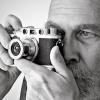Hasselblad to M converter Baveyes HB-M 0.7x
-
Recently Browsing 0 members
- No registered users viewing this page.
-
Similar Content
-
- 20 replies
- 1,339 views
-
- 23 replies
- 1,862 views
-
- 159 replies
- 51,058 views
-
- 18 replies
- 792 views
-
- 5 replies
- 2,626 views
-


Recommended Posts
Join the conversation
You can post now and register later. If you have an account, sign in now to post with your account.
Note: Your post will require moderator approval before it will be visible.